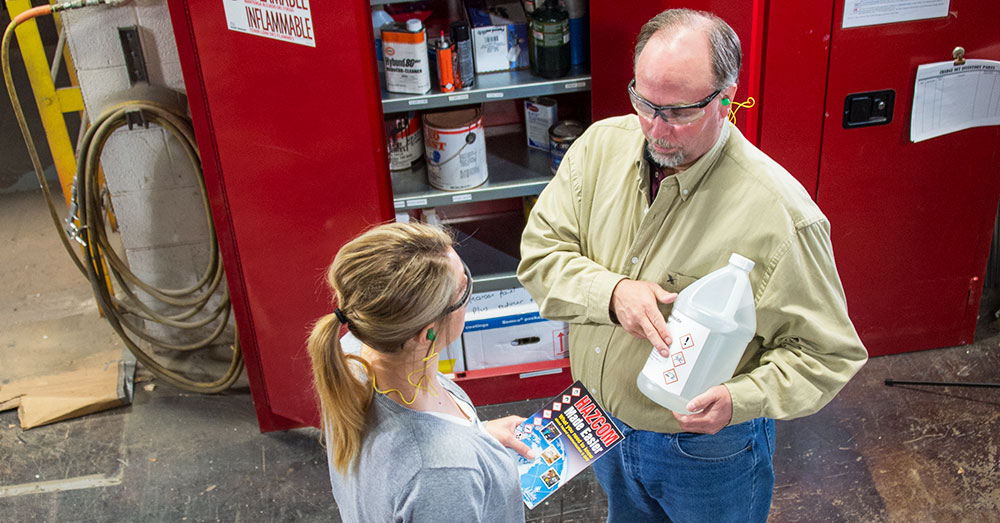HazCom training requirements simplified
Date Posted: 09/21/2020

The hazard communication (HazCom) standard remains one of OSHA’s Top 10 violations from year to year. In fact, it’s the most-cited General Industry standard. While the regulation has numerous requirements, one that often trips up employers is training.
Who needs to be trained and when?
All employees must be provided with information and training on hazardous chemicals in their work area at the time of their initial assignment (prior to being exposed to a chemical), and whenever a new chemical hazard they have not previously been trained about is introduced into their work area. For example, if employees have been trained to work with corrosives, but a new chemical is an oxidizer, they would need training on that hazard.
The regulations allow you to design information and training to cover categories of hazards, such as flammability or carcinogenicity, or specific chemicals. Chemical-specific information must always be available through labels and safety data sheets (SDSs).
What needs to be covered in training?
Employees must be made aware of any operations in their work area where hazardous chemicals are present, and the location and availability of the written hazard communication program, including the required list(s) of hazardous chemicals, and SDSs.
Training must include at least:
- Methods and observations that may be used to detect the presence or release of a hazardous chemical, such as monitoring conducted by the employer, continuous monitoring devices, visual appearance or odor of hazardous chemicals when being released, etc.;
- The physical, health, simple asphyxiation, combustible dust, and pyrophoric gas hazards, as well as hazards not otherwise classified, of the chemicals in the work area;
- How employees can protect themselves from these hazards, including specific procedures in place to protect employees from exposure to hazardous chemicals, such as work practices, emergency procedures, and personal protective equipment (PPE) to be used; and
- The details of the hazard communication program, including an explanation of the labels received on shipped containers and the workplace labeling system used by their employer; and the SDS, including the order of information and how employees can obtain and use the appropriate hazard information.
Is refresher training required?
The standard does not require refresher training at specified intervals. However, providing initial training and expecting employees to remember everything for years might not be realistic. If your employees cannot answer questions about the training previously delivered, then refresher training may be a good idea. In addition, if there are changes to the written program that would impact employees, additional training is likely needed.
How Safety Management Suite Can Help
HWCH Text
E-mail Newsletter
Sign up to receive the weekly EHS Insider email newsletter for safety articles, news headlines, regulatory alerts, industry events, webcasts, and more.